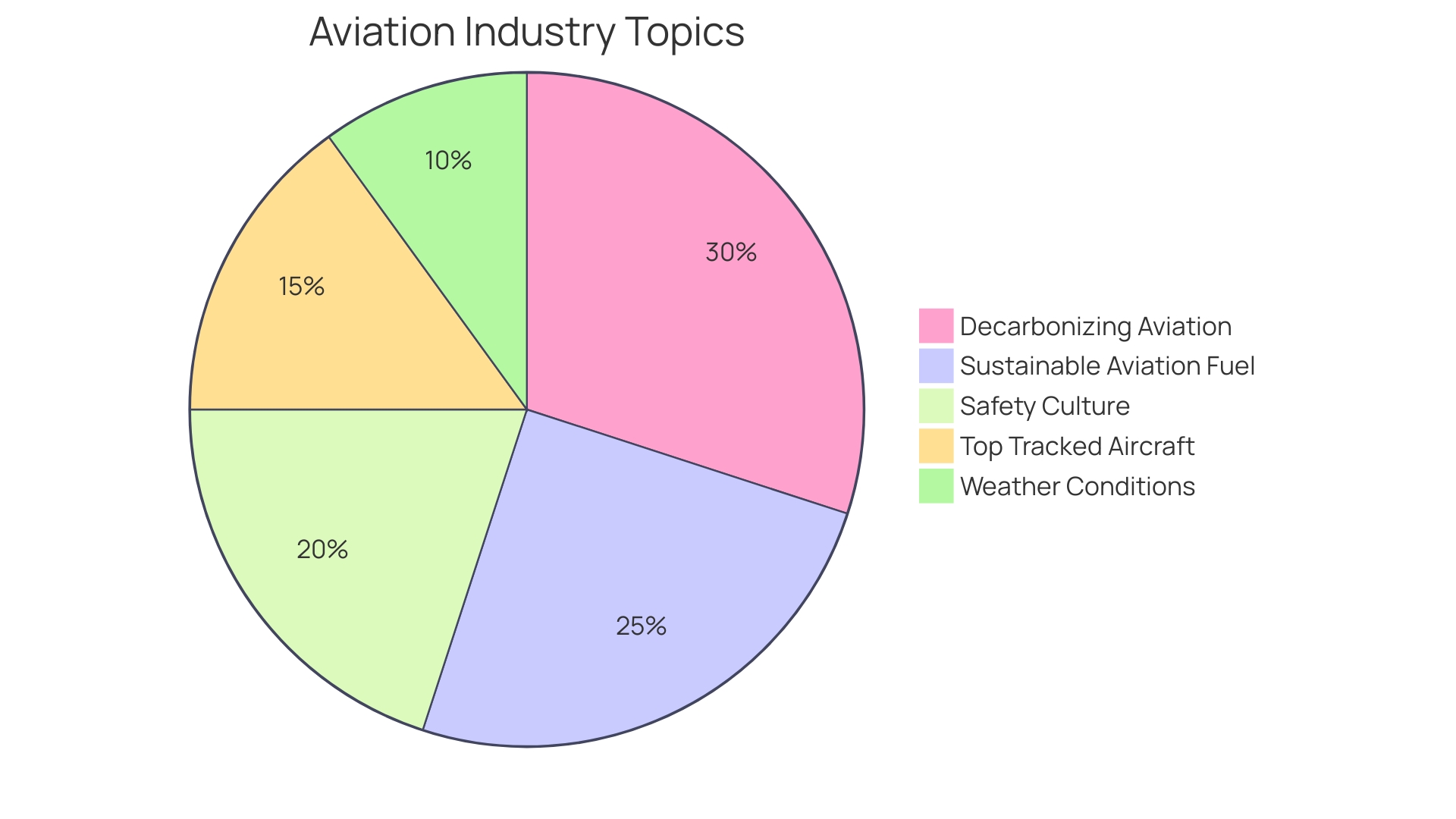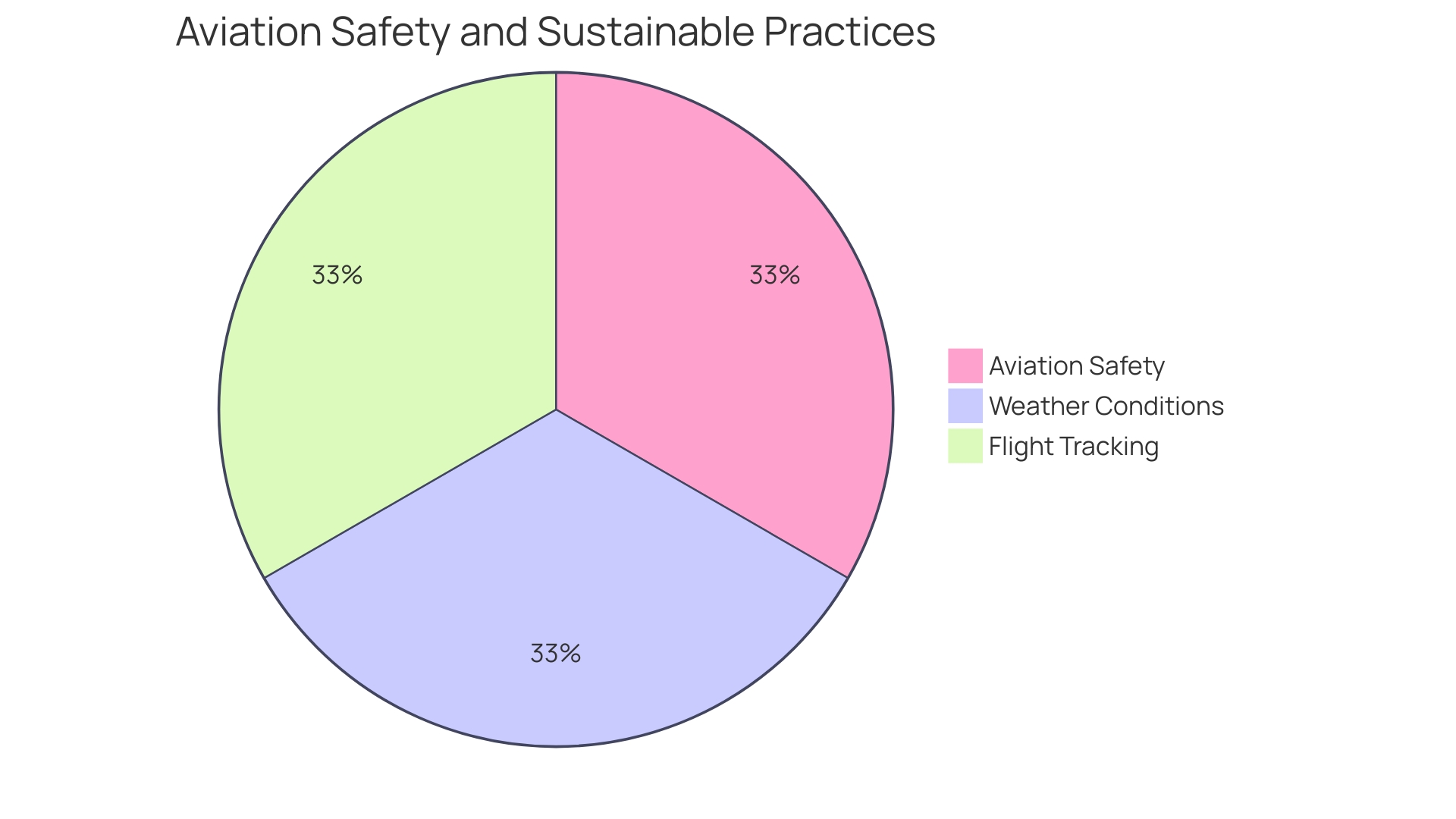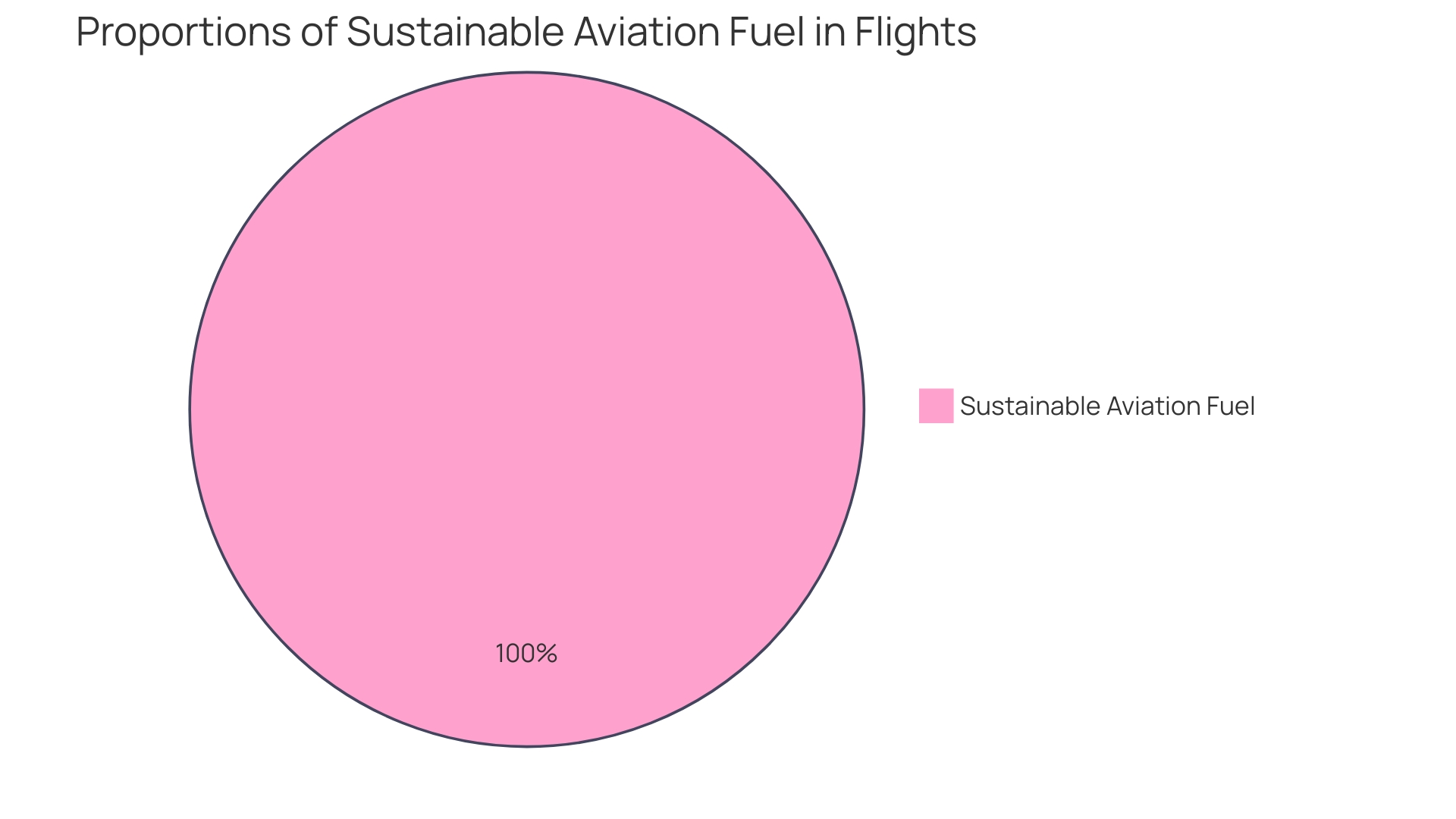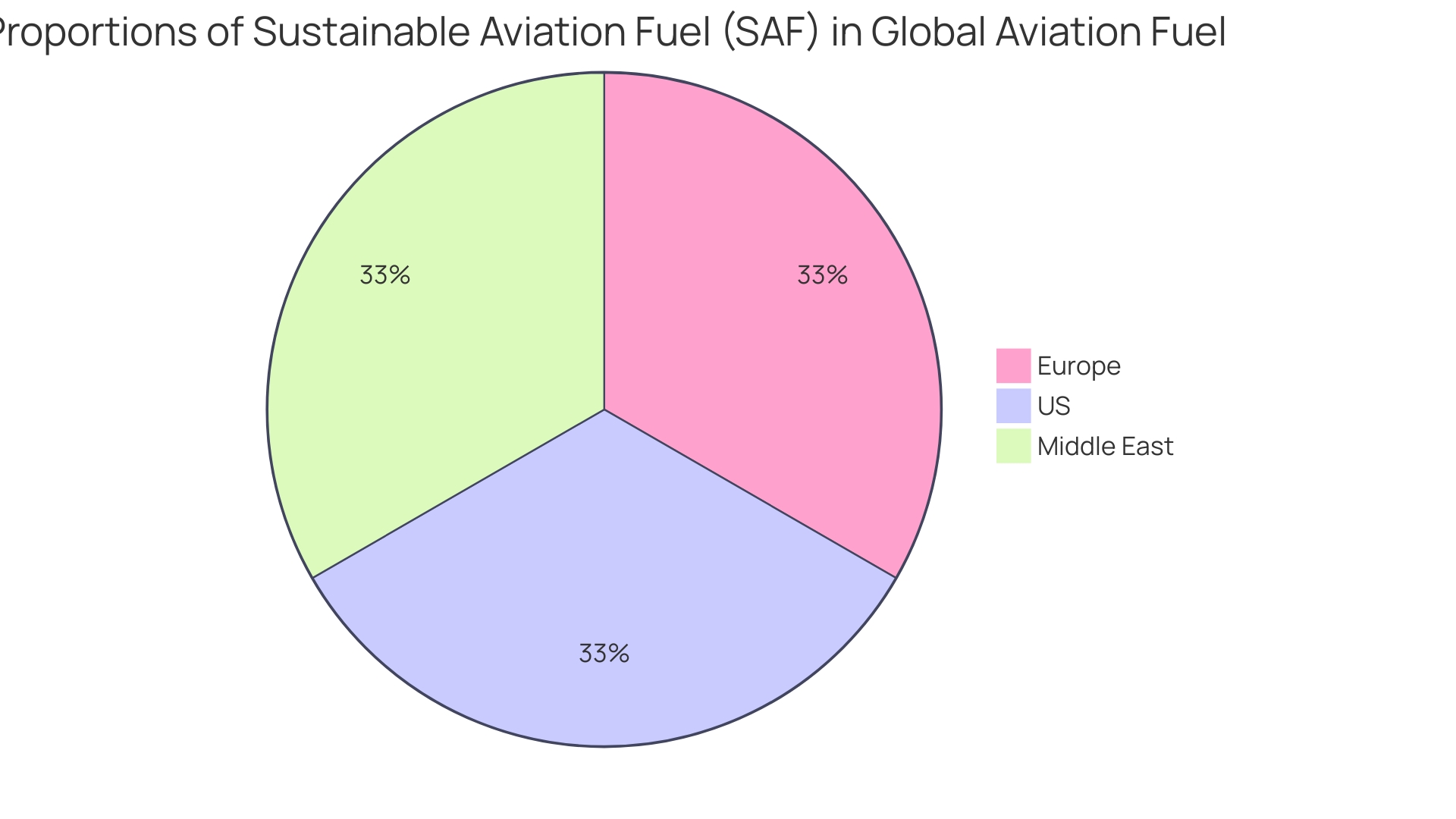Introduction
The aviation industry is on a quest to reduce its environmental impact and achieve carbon neutrality, and Sustainable Aviation Fuel (SAF) is emerging as a game-changer in this endeavor. Unlike ground transport, which can rely on electric vehicles, aviation's heavy reliance on fossil fuels and battery technology constraints make SAF the most viable alternative. SAF, derived from non-traditional sources like agricultural waste and used cooking oil, offers a reduction in carbon intensity of over 80% compared to conventional jet fuel.
However, despite its potential, the path to widespread SAF adoption faces challenges such as supply, demand coordination, and cost. Nevertheless, industry giants like American, Delta, and United are committed to ambitious carbon neutrality goals, with SAF playing a central role. With continuous innovation and collaboration, the aviation sector is poised to make significant strides in reducing its carbon footprint and contributing to the global fight against climate change.
The Need for Sustainable Aviation Fuels
The evolution of Sustainable Aviation Fuel (SAF) is a transformative step toward a more sustainable future for the highly scrutinized aviation sector. As the sector grapples with the challenge of decoupling growth from greenhouse gas emissions, the deployment of SAF is emerging as the most feasible way to reduce the environmental impact of flying. Unlike ground transport, where electric vehicles offer a clear path to reduced emissions, aviation's heavy reliance on fossil fuels and the weight constraints of battery technology make SAF an indispensable alternative.
Last year's pioneering transatlantic flight, powered by alternative sources like fat and sugar, provided a tantalizing preview of what's on the horizon for airlines. Industry giants, including American, Delta, and United, have committed to ambitious carbon neutrality goals by 2050, with SAF playing a central role. The clean-burning characteristics of SAF, derived from non-traditional sources such as agricultural waste, used cooking oil, and even microorganism byproducts, offer a reduction in carbon intensity of over 80 percent when compared to conventional jet fuel.
However, the path to widespread SAF adoption is not without its obstacles. The current production of SAF is less than 0.1 percent of global aviation fuel consumption, highlighting issues with supply, demand coordination, and cost. Moreover, addressing aviation's full environmental footprint extends beyond CO2 emissions.
The industry is also focusing on mitigating the impact of non-CO2 contributors like contrail cirrus formations, which have a significant warming effect.
Despite these challenges, recent milestones like Virgin Atlantic's groundbreaking SAF-powered flight underscore the industry's commitment to sustainability. With continuous innovation and collaboration, the aviation sector is poised to make significant strides in its journey to reduce its carbon footprint and contribute to the global fight against climate change.

Benefits of Sustainable Aviation Fuels
Sustainable Aviation Fuel (SAF) represents a transformative leap for the aviation industry, addressing several critical environmental and operational concerns. While Saf's ability to drastically cut carbon dioxide emissions is well-known, the benefits extend far beyond this. SAF contributes to cleaner air by significantly lowering the emission of sulfur oxides and particulate matter, which are associated with a range of health problems.
Delta Air Lines, recognizing the urgency to act on climate change, has committed to replacing 10% of its conventional jet fuel with SAF by 2030. This move is set to not only reduce emissions but also to mitigate the reliance on traditional fossil fuels, thereby enhancing energy security. As a drop-in fuel, SAF requires no modifications to existing aircraft or fuel infrastructure, making it a readily implementable solution.
However, despite these advantages, the adoption of SAF is still in its nascent stage, with only about 0.1% of flights currently powered by it. This slow uptake is partly due to prevalent misconceptions about SAF and a lack of widespread consumer awareness. Education plays a crucial role here; for example, some consumers humorously note that SAF, which can be made from cooking oil, even carries a scent reminiscent of French fries.
While anecdotes like these might seem trivial, they underscore the need for a deeper understanding of Saf's significance in achieving net-zero emissions for the sector.
The recent milestone achieved by Virgin Atlantic’s groundbreaking transatlantic flight, powered solely by alternative fuels, serves as a potent demonstration of greener flying's feasibility. Despite such successes, challenges persist, particularly with regards to fuel supply and the need for further technological developments to meet stringent emissions targets.
The aviation industry’s journey towards a sustainable future is also marked by promising partnerships, like the one between Airbus and Neste, aimed at decarbonizing aviation. With commercial aviation's significant environmental footprint—accounting for approximately 3.5% of anthropogenic climate change impacts—the push for SAF is more critical than ever. Notably, CO2 emissions from aviation have soared since the mid-1980s and could consume up to one-quarter of the global carbon budget aligned with a 1.5°C temperature cap by 2050 if left unchecked.
Overall, SAF emerges as a key player in the aviation industry's strategy to reduce its environmental impact while maintaining operational excellence. Stakeholders from various sectors, including energy, aviation, and the public domain, are urged to collaborate, leveraging financial and policy mechanisms to scale SAF production and usage. The path to a greener and more sustainable aviation industry is clear, with SAF at the forefront of this transformative journey.

How Sustainable Aviation Fuels Work
Sustainable Aviation Fuel (SAF) represents a transformative approach to greening the aviation industry. These alternative fuels are synthesized from diverse renewable resources, including plant biomass, used cooking oils, algae, and even through innovative carbon capture and utilization processes. The conversion of these varied feedstocks into jet fuel is engineered to be fully compatible with existing aviation infrastructure, negating the need for substantial overhauls or investments in new technologies.
This compatibility is a pivotal advantage, as it permits a direct substitution for conventional jet fuels, thus facilitating a smoother transition to more sustainable flight operations.
The environmental advantages of SAF are markedly evidenced by recent groundbreaking events, such as the first transatlantic flight powered solely by alternative fuels. This historic flight, operated by Virgin Atlantic from London to New York, showcased the feasibility of SAF in long-haul operations, although it highlighted the current challenge of insufficient fuel supply to meet potential demand.
Life-cycle analysis studies, like those conducted by students at Waubonsee Community College using the Greenhouse Gases, Regulated Emissions, and Energy Use in Technologies (GREET) model, provide critical insight into the environmental impact of SAFs. These studies underscore the importance of SAF in reducing emissions associated with air travel—an especially pressing concern considering that a round trip flight from New York City to London can emit roughly 1000 kilograms of carbon dioxide, a significant contributor to an individual's carbon footprint.
Despite the challenges of scaling up production and distribution, the strategic use of SAF is being actively pursued by major airlines, with some setting ambitious goals to achieve net-zero carbon emissions by 2050. The potential of SAF is further illustrated by innovative fuel sources, such as fats, sugars, and even waste materials, which could soon be powering flights, markedly reducing the aviation industry's reliance on fossil fuels.
The transition to SAF is not only a technological endeavor but also a collaborative effort among stakeholders in aviation, energy, and the public sector. Strategic partnerships, along with financial and policy initiatives, are crucial in fostering an environment conducive to the large-scale adoption of SAF, as highlighted in reports focusing on key regions such as Europe, the US, and the Middle East. These collaborative efforts are vital to overcoming the current limitations and realizing the full potential of SAF in mitigating the environmental impacts of aviation, which accounts for a significant proportion of human-induced atmospheric changes.

Feedstocks for Sustainable Aviation Fuels
The production of Sustainable Aviation Fuel (SAF) is integral to reducing the carbon footprint of the aviation industry, which is responsible for approximately 7% of US transportation emissions. This innovative fuel can be derived from a diverse array of feedstocks, each with unique advantages. Non-food crops, agricultural residues, and dedicated energy crops are prime examples of biomass feedstocks that are being leveraged for SAF production.
Waste oils, including used cooking oils and animal fats from various industries, are not only abundant but also provide a recycling pathway for materials that would otherwise contribute to waste.
Microalgae, in particular, stand out as a promising feedstock due to their rich oil content and the fact that they can thrive on non-arable land. This minimizes competition with food crops for land use. However, the viability of these feedstocks is determined by their availability, sustainability credentials, and cost-effectiveness.
Overcoming the inherent chemical recalcitrance of feedstocks like lignin, which is often disposed of or underutilized due to its complex chemical structure, is a challenge being addressed by ongoing research.
Innovative partnerships, like the collaboration between Airbus and Neste, are crucial in driving the adoption of SAF and achieving emissions reduction targets set by airlines. With the first transatlantic flight powered by a blend of fat and sugar already a reality, the future of SAF is promising. Yet, its widespread adoption hinges on the ability to scale production in an energy-efficient and cost-effective manner.
As the industry continues to grow, with air travel and air freight demands on the rise, SAF stands as a viable option for mid-century decarbonization of the aviation sector.
Life Cycle Emissions Reduction
Sustainable Aviation Fuel (SAF) is a transformative solution for the aviation industry's climate impact, offering a significant reduction in life cycle emissions. The production of SAF encompasses the entire fuel lifecycle, beginning with sustainable feedstock cultivation and ending with the combustion phase. This comprehensive assessment ensures that Saf's environmental benefits are considered at every stage.
Studies have highlighted Saf's potential to substantially curb greenhouse gas emissions when compared to traditional jet fuels. With the right mix of renewable feedstocks and cutting-edge production methodologies, the aviation sector stands poised to make a meaningful contribution to global efforts against climate change.
From a global perspective, commercial aviation is responsible for approximately 3.5% of anthropogenic changes to the Earth's energy balance, with CO2 emissions from this sector having doubled since the mid-1980s. These emissions are projected to consume a quarter of the available CO2 budget if global warming is to be limited to 1.5°C by 2050. Moreover, aviation-related activities around airports not only elevate levels of NOx and ozone, degrading air quality and posing health risks, but also contribute to noise and lead pollution.
Pioneering initiatives, such as LanzaJet's Freedom Pines Fuels plant in Georgia, mark historic progress in the transition to SAF, showcasing the practical steps being taken towards achieving net-zero carbon emissions in aviation.

Compatibility with Existing Aircraft and Infrastructure
Sustainable Aviation Fuel (SAF) has emerged as a beacon of hope for reducing emissions within the aviation industry, a sector deeply committed to safety and efficiency. Saf's compatibility with current aircraft technology marks a significant advancement, as it has passed rigorous testing and meets stringent industry standards, allowing it to be used in commercial jets without the need for engine or system modifications. This compatibility is underscored by the ability to blend SAF with traditional jet fuel, enabling a gradual increase in the use of renewable fuels without disrupting existing operations.
The infrastructure in place for fuel distribution is already capable of managing SAF, which means the transition can occur without the imposition of substantial infrastructural investments. The pivotal flight across the Atlantic, powered by a blend of SAF and conventional fuel, showcased the practicality and reliability of using SAF in a real-world scenario, setting a precedent for the industry's progression towards net-zero carbon emissions. With aviation giants like Virgin Atlantic at the forefront, utilizing SAF in their expanding route network, the integration of SAF serves not only as an environmental stride but also as a testament to the industry's commitment to innovation and customer service.
Economic and Socioeconomic Benefits
As the aviation industry embarks on an ambitious journey towards net-zero carbon emissions by 2050, sustainable aviation fuel (SAF) stands out as a transformative solution. SAF is not derived from crude oil but from renewable waste and residue raw materials, such as used cooking oils and animal fat waste. Its production ushers in a slew of economic and socio-economic advantages, including novel job prospects across the supply chain—from feedstock cultivation and fuel refinement to distribution.
The deployment of SAF fosters innovation and stimulates investments in renewable energy technologies, illustrating a commitment to environmental stewardship as seen with Delta Air Lines' goal to replace 10% of its annual fuel usage with SAF by 2030. Additionally, SAF production can bolster rural economies by creating value for agricultural and forestry residues, thereby generating new income opportunities for farmers and landowners.
Moreover, the education of consumers about SAF's benefits is vital, as it breaks down misconceptions and highlights the significance of this fuel in achieving a sustainable travel experience. For instance, although some may amusingly note Saf's potential to smell like French fries, its broader importance lies in its capacity to move the industry towards net zero emissions.
Innovation and partnerships are critical in scaling SAF production, as demonstrated by Virgin Atlantic's groundbreaking transatlantic flight powered solely by alternative fuels. However, challenges persist, particularly in the supply and cost of SAF compared to traditional jet fuel. Currently, SAF accounts for less than 0.1% of global aviation fuel consumption and is more expensive than kerosene, with production levels still relatively low.
Despite these challenges, the potential environmental impact of switching to SAF is profound. Aviation CO2 emissions have doubled since the mid-1980s and could constitute a quarter of the CO2 budget to limit warming to 1.5°C by 2050. SAF offers a viable pathway to decarbonize the sector, especially considering the average 20 to 30-year operational lifespan of commercial aircraft and the uncertain feasibility of electric-powered airplanes for long-haul flights.
The switch to SAF is not just about reducing the carbon footprint; it's about envisioning a future where the skies are traversed by aircraft fueled by renewable sources, aligning with global efforts to combat climate change and maintaining the safety and infrastructure that commercial aviation is known for.
Challenges and Future Directions
The landscape of aviation is on the cusp of a significant transformation with the advent of sustainable aviation fuel (SAF). However, the path to replacing current transportation fuels with SAF, which has the potential to be burned in existing engines without adding more planet-warming gases to the atmosphere, is strewn with challenges. Scalability remains a primary concern, as production must ramp up to meet the escalating demand.
Innovations are underway to refine the efficiency of SAF production and bring down costs, as demonstrated by the groundbreaking transatlantic flight powered by SAF, which marked a historic achievement for Virgin Atlantic and the broader aviation industry.
Moreover, the sustainability of feedstock sourcing is a pivotal aspect, as it directly impacts food security and biodiversity. To mitigate any adverse effects, a balanced approach to feedstock sourcing is essential. With SAF primarily produced from renewable raw materials like used cooking oil, and with intriguing anecdotes about its French fry-like smell, the broader implications for the aviation industry's move towards net-zero are substantial.
The successful Virgin Atlantic Boeing 787 flight, which utilized SAF made from tallow and waste fats, sets a precedent for the industry, bolstering confidence in the viability of SAF. Nevertheless, with only 0.1% of flights currently powered by SAF, the industry faces considerable hurdles in cost and availability. This calls for a concerted effort from stakeholders across regions, including Europe, the US, and the Middle East, to create an environment conducive to scaling SAF production through financial incentives and policy frameworks.
Critically, the environmental impact of aviation, which accounts for approximately 3.5 percent of human-induced changes to the Earth’s energy balance, cannot be understated. With CO2 emissions from aviation potentially accounting for a quarter of the CO2 budget to limit warming to 1.5°C by 2050, the urgency for solutions like SAF is stark.
Education and debunking misconceptions about SAF are equally important, as public awareness and understanding are key to embracing this sustainable travel option. Partnerships between the public and private sectors are instrumental in making the seemingly impossible possible and propelling the industry towards a greener future. As the Prime Movers Lab blog series explores, the existing technology for sustainable fuels is already here; the challenge lies in making it a scalable and cost-effective reality.
Global Targets and Initiatives for SAF Adoption
As the aviation sector endeavors to meet the ambitious carbon-neutral growth objectives post-2020 and a 50% reduction in emissions by 2050 relative to 2005, the role of Sustainable Aviation Fuel (SAF) becomes increasingly pivotal. Companies like Delta Air Lines are at the forefront, targeting a substitution of 10% of their jet fuel with SAF by 2030 and implementing fuel efficiency improvements to further reduce consumption.
SAF's environmental advantage lies in its renewable origins, such as used cooking oils and animal fat waste, which contrast with conventional jet fuel's reliance on crude oil. Recognized for its ability to seamlessly integrate with existing aircraft engines and fuel infrastructure, SAF is not just a future concept but a present reality, offering a drop-in solution to reduce carbon emissions.
However, despite its potential, the adoption of SAF remains low, powering only 0.1% of flights. This can be attributed to a lack of widespread knowledge and misconceptions about SAF among consumers. Education is key, as emphasized by Amelia DeLuca, Delta's Chief Sustainability Officer, who notes the importance of consumer awareness in driving the industry toward net zero.
To bolster SAF adoption, governments and international organizations are stepping up. The EU and its Member States have shown leadership by shaping an agreement for a global framework on SAF at the International Civil Aviation Organization (ICAO) Conference. This includes a 5% emissions reduction goal by 2030 through SAF use, with a review set for 2028 to reflect market and capacity developments.
Furthermore, industry partnerships are proving to be a catalyst for innovation. For example, the collaboration between Airbus and Neste is driving efforts to decarbonize aviation. Such initiatives are complemented by policy frameworks and incentives that support SAF production and use, as seen in the joint initiative in East Germany focusing on eSAF production based on green hydrogen.
Incorporating insights from stakeholders across aviation, energy, and the public sector, a report highlights the urgency of financial and policy measures to scale SAF production. It identifies Europe, the US, and the Middle East as key regions for establishing optimal production hubs to meet growing demand.
In conclusion, the integration of SAF into the aviation sector is critical for achieving carbon reduction targets. The combined efforts of education, international agreements, strategic partnerships, and supportive policies are instrumental in propelling the industry toward a more sustainable future.
Conclusion
Sustainable Aviation Fuel (SAF) is a game-changer for the aviation industry's quest for carbon neutrality. Derived from non-traditional sources like agricultural waste and used cooking oil, SAF offers an over 80% reduction in carbon intensity compared to conventional jet fuel. Challenges in supply, demand coordination, and cost exist, but major airlines like American, Delta, and United are committed to ambitious carbon neutrality goals with SAF at the forefront.
SAF addresses critical environmental and operational concerns by significantly cutting carbon dioxide emissions and lowering sulfur oxides and particulate matter, improving air quality and public health. Delta Air Lines aims to replace 10% of its conventional jet fuel with SAF by 2030, enhancing energy security and reducing reliance on fossil fuels. The compatibility of SAF with existing aircraft and infrastructure makes it an accessible solution without the need for costly modifications.
Derived from diverse renewable resources like plant biomass, used cooking oils, and microalgae, SAF seamlessly integrates with existing aviation infrastructure, facilitating a smooth transition to sustainable flight operations. Life-cycle analysis studies highlight SAF's potential to reduce emissions associated with air travel. Strategic partnerships and collaboration are crucial for scaling up SAF production and usage, particularly in key regions like Europe, the US, and the Middle East.
The production of SAF relies on various feedstocks, including non-food crops, agricultural residues, waste oils, and microalgae. These feedstocks offer unique advantages in terms of availability, sustainability, and cost-effectiveness. SAF brings economic and socio-economic benefits, creating job opportunities and driving investments in renewable energy technologies.
Public education is vital in raising awareness about SAF's significance in achieving net-zero emissions for the aviation industry.
While challenges remain in supply and cost, the potential of SAF to decarbonize the aviation sector and contribute to global climate goals is undeniable. Governments, international organizations, and industry partnerships are actively supporting SAF production and use through policy frameworks, financial incentives, and international agreements. The integration of SAF into the aviation sector is crucial for achieving carbon reduction targets, and collaborative efforts are key to propelling the industry toward a more sustainable future.




